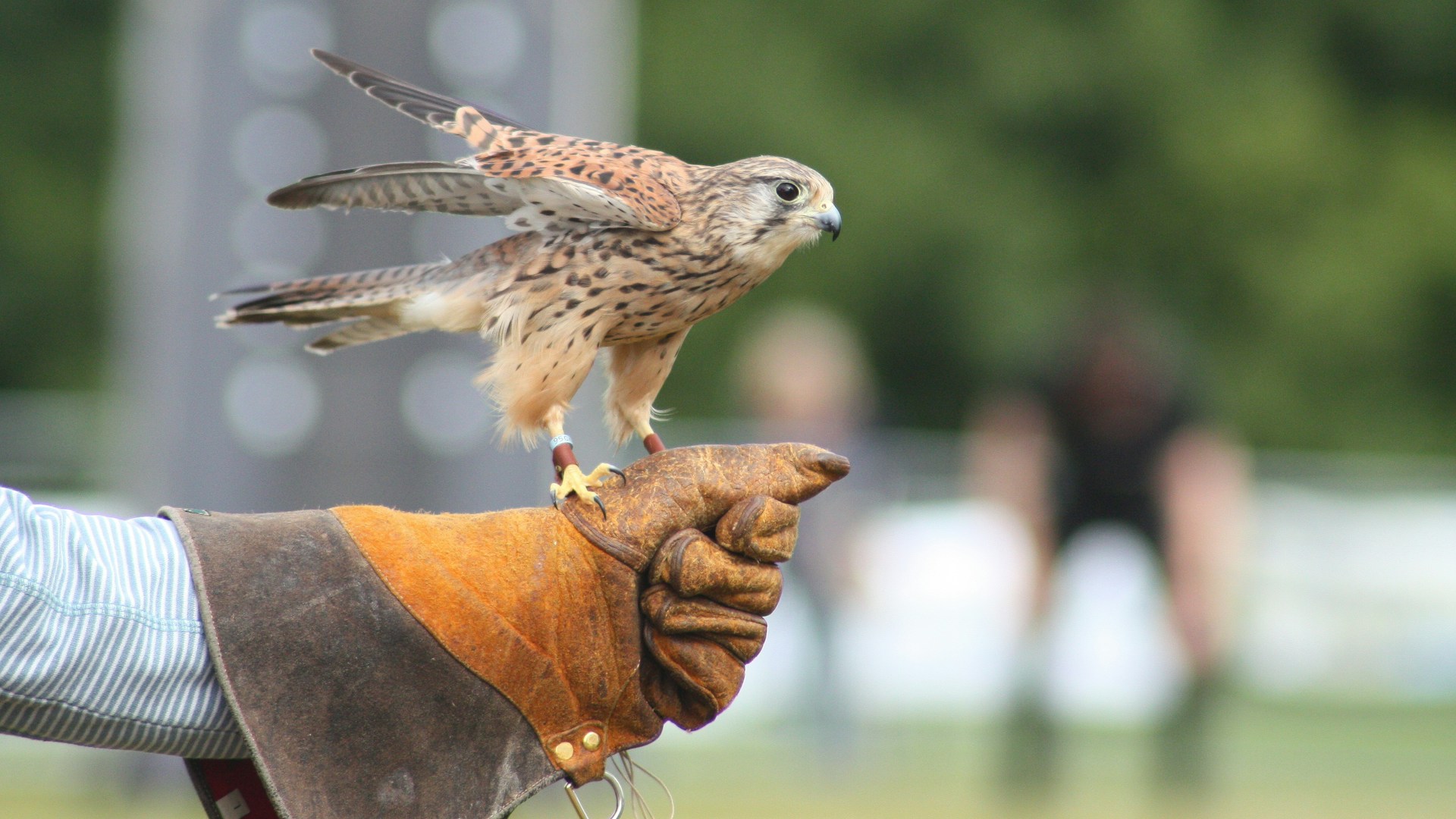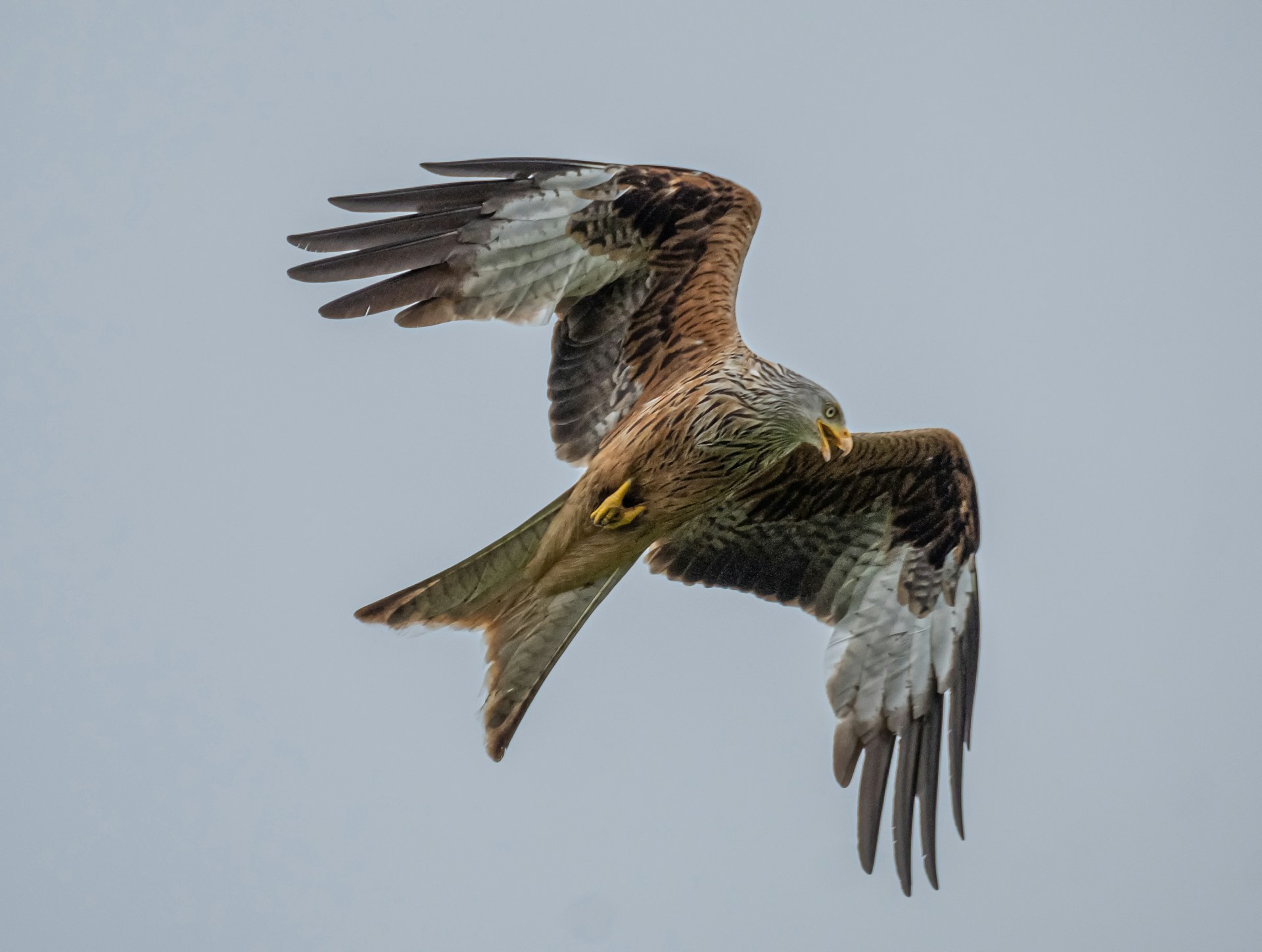Few creatures in the United Kingdom are as regal or as awe-inspiring as birds of prey. Ranging from swift falcons to enigmatic owls, British birds of prey form an integral part of our natural heritage and captivate birdwatchers and nature enthusiasts alike.
Jump to:
What Are Birds of Prey?
Birds of prey are also known as ‘raptors’. These avian predators are famous for their keen eyesight, powerful talons, and hooked beaks. Eagles, hawks, falcons, and owls are all birds of prey, and each species is uniquely adapted to its hunting style and environment.
15 Birds of Prey in the UK
The United Kingdom is home to over 500 species of bird, but birds of prey stand out for their crucial role in maintaining equilibrium. They help to control the populations of smaller birds and mammals, ensuring the health of our ecosystems.
From the soaring red kites that wheel over the Welsh valleys to barn owls - the silent hunters - that patrol the night, the diversity of birds of prey reflects the intricate web of our natural spaces. Join us on a virtual expedition into the realm of UK birds of prey, starting with some of the most common…








Buzzard
Identification Tips: A medium-sized bird of prey (54cm long, 1.2m wingspan) with predominantly brown plumage (with cream/mottled details). Buzzards have broad wings,a short tail, and are often mistaken for eagles'. If it’s nearby, you’ll often hear a buzzard before you see it, as they have a very distinctive “kee-yaa” call.
Habitats: Grassland, farmland, woodland, heaths’ and moors.
Conservation Status: Classified as Green.
Hobby
Identification Tips: A very small falcon (35.5cm long, 87cm wingspan) that migrates to the UK in summer. They have grey plumage on top, with black streaks on a white belly, plus red/orange feathers on the legs, a white throat, and a black “moustache”. The hobby has evolved to catch not only small birds but also insects like dragonflies.
Habitats: Heathlands, wetlands, and woodland edges in Southern/Eastern England.
Conservation Status: Classified as Green.
Kestrel
Identification Tips: A small falcon (36cm long, 76cm wingspan), kestrels have a grey head that’s framed by gingery-brown and creamy plumage with a variety of bands and speckles. The giveaway that you’re watching a kestrel is if you see one hovering; they can suspend themselves in the air with their fanned tail and rapid wingbeats.
Habitats: Grasslands, heathlands, and village/townscapes.
Conservation Status: Classified as Amber.
Peregrine Falcon
Identification Tips: A medium-sized, heavy-set falcon (47cm long, 1.2m wingspan) that’s grey on top and white/cream down below (with black bars). Peregrines have a black “moustache” or “mask” and are the UK’s biggest falcon. They’re also the fastest animal in the world, with a diving speed of around 190 mph during a hunt!
Habitats: Coastal cliffs and some city/townscapes (most-commonly in the north and west regions of the UK).
Conservation Status: Classified as Green.
Red Kite
Identification Tips: A large bird of prey (60.5cm long, 1.8m wingspan) with red-brown plumage, black wingtips, and white patches on its underbelly. Instantly recognisable thanks to a long, forked tail. The story of the red kite is a heart-warming one, as they were hunted nearly to extinction, but a successful reintroduction has worked wonders.
Habitats: Woodland and farmland, most commonly in central England and Scotland.
Conservation Status: Classified as Green.
Sparrowhawk
Identification Tips: A small hawk (33cm long, wingspan 62cm), male and female sparrowhawks have totally different colours on their plumage. Males are blue-grey on top and white underneath, with red-orange bars. Females are brown and grey but are much larger. Both have rounded wings, a long, narrow tail, and reddish cheeks.
Habitats: A common site in many habitats across the country, including woodland, forests, parks, fields, moors, marshes, and gardens.
Conservation Status: Classified as Amber.
Tawny Owl
Identification Tips: A medium/small-sized owl (38cm long, 99cm wingspan) with a rounded head and brown plumage. Tawny Owls have a ring of dark feathers around their face, a paler underside, and white spots on their shoulders. They are famous for the “too-wit" cry of the females and the answering “too-woo” call from the males.
Habitats: Woodland, parkland, and gardens.
Conservation Status: Classified as Amber.
Barn Owl
Identification Tips: A small owl (36cm long, 89cm wingspan) with a heart-shaped face, a back that’s mottled grey and gold, and a white underside. Barn owls are most active at dawn and dusk but can also be seen (and heard via their shrill cries and hisses) during the daytime. They are silent in flight and can slow to a near-hover.
Habitats: Grassland and farmland.
Conservation Status: Classified as Green.
However, that’s not an end to the birds of prey that you can spot in the British Isles. If you venture a little further off the beaten path, you may find yourself face to face (or should that be face to beak…?) with…







Golden Eagle
Identification Tips: A very large eagle (83cm long, 2.2m wingspan) with dark brown and gold plumage, hence the name. Heavy - but supremely poised - in flight with deep wingbeats, Golden Eagles will soar on air currents as they hunt prey that can be as large as a fox or a grouse. They nest in giant “eyrie” nests on cliff faces or in trees.
Habitats: Upland areas and glens, mainly in Scotland.
Conservation Status: Classified as Green.
Hen Harrier
Identification Tips: A medium-sized harrier (51.5cm long, 1.1m wingspan) and a heavily persecuted bird of prey due to their tendency to feed on game birds like grouse and fowl. Females are brown and streaky with a white rump and tail bands (hence their other name of “Ringtail”). Males are blue-grey with black wingtips.
Habitats: Moorland, coastland, marshland, heathland, and farmland. They nest in upland moors but winter in the lowlands, especially around the coast.
Conservation Status: Classified as Red.
Little Owl
Identification Tips: A small barrel-shaped owl (22cm long, 56cm wingspan) with a broad head. Little owls are dark brown and white mottled on their upper sides and paler/brown-streaked on their underbelly. They have large yellow eyes that are framed with black rings and crowned with white “eyebrows”.
Habitats: Old trees, parkland, farmland, and rocky areas. You’ll often see them perched on a stump or a rock during the day (looking very cute!).
Conservation Status: Introduced, non-native species.
Marsh Harrier
Identification Tips: The largest of the harriers (51.5cm long, 1.2m wingspan) that is often seen as a “v-shape” in the air. Male Marsh Harriers are gingery-brown and have grey wings with black tips. Females are chocolate brown and have a golden throat/crown. Courting pairs can sometimes be seen tumbling through the air with interlocking talons.
Habitats: Reedbeds.
Conservation Status: Classified as Amber.
Merlin
Identification Tips: A small falcon (28.5cm long, 56cm wingspan) with a square head, blunt tail and pointed wings that have wide bases. Males are blue-grey on top and cream with black streaks on their underside. Females are grey-brown with dark streaks. Even though they don’t hover, they are small enough to “hang” in the breeze as they hunt.
Habitats: Moorland, hillsides, and coastal marshes.
Conservation Status: Classified as Red.
Osprey
Identification Tips: A large bird of prey (56cm long, 1.6m wingspan) with brown and white plumage. During flight, Ospreys sometimes have angled wings that can give the suggestion of “wrists”. If you’re lucky, you can also see ospreys diving to catch fish in their outstretched talons. Breeding Ospreys are a popular subject for nest cams.
Habitats: Wetlands (e.g. lakes, rivers, estuaries) and nearby forests.
Conservation Status: Classified as Amber.
White-Tailed Eagle
Identification Tips: A massive eagle (85cm long, 2.2m wingspan) that’s the UK’s largest bird of prey. Sometimes known as “sea eagles”, they were once extinct in the UK but were successfully reintroduced in the 1970s. They have white tails with a wedge shape, brown plumage, pale heads, bare yellow legs, and large “fingered” wings.
Habitats: Coastal cliffs and lakes in Scotland.
Conservation Status: Classified as Amber.
Some other birds of prey that are rare sights on UK shores include:
- Short-Eared Owl
- Long-Eared Owl
- Goshawk
- Montagu's Harrier
- Rough-Legged Buzzard
- European Honey Buzzard
Recommended for you!
Best SellersGetting into Birdwatching
For many bird watchers - veterans and newcomers alike - spotting a bird of prey is a real highlight. However, birdwatching itself is a doorway to a world that offers a plethora of personal and environmental rewards. It invites us to slow down, be present in the moment, and engage our senses. Observing the rhythmic flapping of bird wings and their calls also has a calming effect on our minds. Birdwatching is a learning experience that never ends, and many birdwatchers often become advocates for conservation.
If you’d like to feed an existing passion for birds or would love to start a journey of discovery, then our Birdwatching Diploma Course is a great place to start. For just £29 (save £98!) you can step up your involvement in this wonderful community and learn how to better engage with these fascinating creatures.













